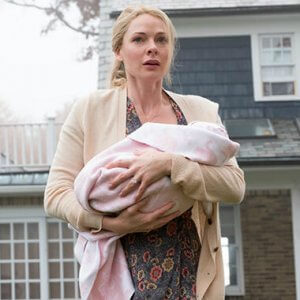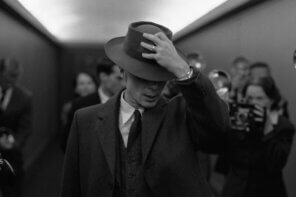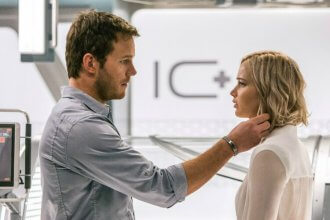I suspect most of us have had to deal with someone plagued by the condition (some would say disease) of alcoholism. In American society we are offered an alcoholic drink at almost every social occasion and we are often judged negatively if we do not partake. It is estimated that one of three adults are “problem drinkers” at some point in their life, most of whom never seek treatment. Over the last 70 years there are a few good movies that deal with this pervasive issue (The Lost Weekend — 1945, A Star Is Born — 1954, Days of Wine and Roses — 1962, Who’s Afraid of Virginia Woolf? — 1966 , What’s Love Got to Do with It — 1993, Leaving Las Vegas — 1995, 28 Days — 2000, Walk the Line — 2005 , Gone Baby Gone — 2007, Flight — 2012, and my personal favorite from 2004, Ray). I am sure you can add a few more but none are very recent, despite the rate of alcohol abuse in this country being thought by most to be static (slightly decreasing in teens, slightly increasing in adults — See here and here). Of course it is not the responsibility of the film industry to dramatize the ills of society, but one would think a condition which collides with so many lives in our day to day existence would be reflected in the art we see on our cinema screens.
A Soul Looking for a Life
After reading Paula Hawkin’s hugely popular 2015 novel The Girl on the Train on which this movie was based, and whose central figure is an alcoholic struggling to achieve sobriety, I looked forward to seeing it translated to the screen. The protagonist in the story is a self-admitted alcoholic who blames her alcohol abuse on being unable to become pregnant and thereby unable to satisfy her husband, resulting in a divorce causing her to lose her dream home. She was set adrift in life without job, friends, or any hope for a worthwhile future and she resorted to alcohol. In the novel she becomes frumpy and unappealing. Some who read it found her to be pathetic and unsympathetic. I did not as I have seen how this condition can suck all motivation, ambition, and self-worth out of its victims.
The movie starts with Rachel (an Academy Award worthy performance by Emily Blunt who has been in so many good films like Sicario and The Devil Wears Prada) looking out the window of a commuter train going down a late fall Hudson River into New York. She appears to be randomly studying the backs of the suburban houses that the track borders, but we soon realize she is focusing on their residents and their lives. From the novel: “There’s something comforting about the sight of strangers safe at home.” Are her thoughts as she whisks by fantasy or reality? Since she is almost continuously inebriated we at first do not know.
As the story moves on, however, we find that she used to live in one of those houses she passes twice every day and she knows it very well, along with the neighboring dwellings. In fact, there are times she sees her ex, Tom (Justin Theroux known for American Psycho and Megamind) and his new wife Anna (Rebecca Ferguson seen in Mission: Impossible — Rogue Nation) and, most painfully, their toddler daughter… the child she could not bear for him. And then there are the neighbors next door… Rachel imagines them as the perfect couple until one day as she zooms by she voyeuristically glimpses the “perfect” wife Megan (Haley Bennett, currently seen in The Magnificent Seven) passionately kissing a different man than her husband on her back balcony. How could the ideal marriage come to this, she wonders. Then Megan comes up missing. With the police desperate for clues (the lead detective, Riley, is the ever solid Alison Janney who will always, for me, be press secretary C. J. Cregg of West Wing fame but also did pretty good turns in Juno and American Beauty).
A Layered Plot
Paula Hawkin’s novel kept plot points hidden and uncovered only in layers, and the movie does the same. In time we learn that Rachel’s life truly has no purpose. As a remedy she decides to reveal to Det. Riley that she knows that Megan was seeing someone who was not her spouse. Rachel tells herself that being an important part of a headline-making, missing-person investigation, would make her life have substance… she is certain.
 To make her story more believable to the police, she creates a fictional background story which, when exposed, paradoxically positions her as a leading suspect in Megan’s disappearance. And the blackouts that she has from her drinking (a very real symptom of advanced alcoholism) create doubts in her own mind as to what involvement she actually had. Since Megan and Anna look very much alike, and since she had previously stalked Anna to the point of walking into her home and taking Tom and Anna’s child into their backyard by the train tracks, could it be possible that she mistakenly harmed Megan… or worse?
To make her story more believable to the police, she creates a fictional background story which, when exposed, paradoxically positions her as a leading suspect in Megan’s disappearance. And the blackouts that she has from her drinking (a very real symptom of advanced alcoholism) create doubts in her own mind as to what involvement she actually had. Since Megan and Anna look very much alike, and since she had previously stalked Anna to the point of walking into her home and taking Tom and Anna’s child into their backyard by the train tracks, could it be possible that she mistakenly harmed Megan… or worse?
So the movie becomes a psychological mystery thriller, and if one can accept the implausibilities, it is actually a pretty good one. Hawkin’s novel uses the Jodi Picoult method of having each chapter told from the point of view of one of the main characters and director Tate Taylor (best known for directing The Help) introduces the characters in that same way. However, it is still a confusing story for those who have not read the novel. As I told my wife when she whispered questions in my ear, what you are seeing may or may not have actually happened… it may be distorted or misremembered by Rachel’s drunkenness and blackouts.
Decisions Questioned
I generally try to not be too picky about changes made from the page to the screen, but Taylor, along with screenplay adaptor Erin Cressida Wilson, made, I think, some major missteps in their screenplay and direction. Why was the film changed from taking place in England where train travel is so much more prevalent, yet the lead is an English actress with her accent retained? How could Rachel possibly have seen the things she says she did when her train is whizzing by on a straight track (in the novel it is well explained that the section of the rail line that goes by “her” house is on a curve and near a junction where the train briefly slows to a crawl).
Why are many subplots from the novel eliminated (as expected) yet one of the most confusing side-stories (having to do with Megan’s past) is retained — much to most viewer’s befuddlement? And why did the movie have to be so coarse? The episodes of sexual intercourse are graphic and far more frequent than needed for the exposition of the narrative. They are consistently not “making love” but rather taking over another’s body. The “F-words” fly too fast to count. Odd in a movie where the violence is fairly well hidden, save for the culminating scene. And why is Rachel the only major role in the movie one could like, and even she is only, in the words of our President, “likable enough”? Why is almost every man in the movie (unlike the novel) an abuser or slime ball? And is Justin Theroux really right for Tom’s role? To me he totally strikes the wrong tone.
An Actress in Her Prime
But getting back to Emily Blunt… see the movie for her portrayal of sorrowful Rachel if nothing else. She is not a stumbling, “disgusting” drunk. She speaks and something is just not quite right (Is she slurring her speech?). The hollow look in her eyes… is she altered? She walks and there is just the occasional readjustment of her gait. She just sporadically leans a little to one side to place her hand on a rail or wall.
 There is a scene where Rachel tries to charm a small girl on the train and her mother’s delight at the attention her daughter is receiving turns to concern as she perceives that her child’s admirer is not quite “right.” But it is subtle, as in “Has she been drinking?” Emily portrays that so well… as she does the dawning realization that much of what she has been told she did while in a drunken blur did not actually happen. Kudos to her for a tremendous acting job in a less than tremendous movie.
There is a scene where Rachel tries to charm a small girl on the train and her mother’s delight at the attention her daughter is receiving turns to concern as she perceives that her child’s admirer is not quite “right.” But it is subtle, as in “Has she been drinking?” Emily portrays that so well… as she does the dawning realization that much of what she has been told she did while in a drunken blur did not actually happen. Kudos to her for a tremendous acting job in a less than tremendous movie.
It is hard for me to separate the empathy I feel for Rachel that is generated by the film compared to what I already knew about her character from reading the novel. Others look at Rachel with pity. In the novel she says to herself “I’d never realized, not until the last year or two of my life, how shaming it is to be pitied.” She is a tortured soul, lead to believe she is worthless and a failure. And Emily Blunt for me brought that all with her. I looked at her and wanted to pray for her that she would leap the hurdle and finish the race.
Failing at Life
Rachel understands she needs to stop drinking and move on, and she tries (many times in the novel and a few times in the film). She repeatedly resolves to turn the corner, and repeatedly fails to do so. To put up with her would require the patience of Job… or the unconditional love of God. Her escape into the bottle releases all those good-feeling endorphins and makes her care less about her emptiness as the bottle empties. I, Ron Steury, am so lucky, no chosen and accepted, to have a Holy Spirit that, even on my worst days, fills me with knowledge that I am loved and gives me hope for the next day. Thank you, God.
So there it is. A movie that I suspect is much more satisfying for those millions who have read the novel than those who have not. It is not Gone Girl as some had hoped, missing the sympathetic Nick Dunne/Ben Affleck character as well as the cunningly villainous Amy Dunne/Rosamund Pike. But I have read some reviews which say it is immediately evident who “did it,” at which I scoff. If you enjoy thriller mysteries, can withstand the barrage of gutter language, and can suspend disbelief for some highly suspicious coincidences, it is worth a view.





